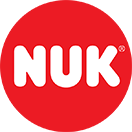
WHAT CAN I DO FOR YOUR
TUMMYACHE?
Tummy ache? Oh dear! Many babies struggle with this agonising problem in their first months of life. And when the little ones cry in pain, their worried parents suffer with them.
The culprit of this pain is usually the intestines. More precisely: flatulence, caused by the immaturity of the bowels. When gases develop, the internal pressure keeps increasing. Only, of course, the little ones can´t yet tell what is wrong with them.
Many desperate parents ask themselves: how does tummy ache develop and what can we do about it? Can we avoid tummy ache? And what does your nappy tell us? We, at NUK, take a close look at this topic. Because understanding is the first step, so that the start in life does not hit the tummy so hard.

HOW DOES TUMMY ACHE OCCUR AND WHAT CAN WE DO ABOUT IT?
Dipl.-Med. Suzanne Knauer-Schiefer, Practice for Paediatrics and Adolescent Medicine / Neonatology, explains the causes of baby tummy ache like this:
"First of all, the good news for worried parents: as terrible as it is when your baby seems to be in pain, the occasional tummy ache is, in the vast majority of cases, not a sign of a serious illness. The very first and most common cause of baby tummy ache is the development of the intestines. The healthy intestinal flora is only just being established. Until this is achieved, other bacteria initially take over. This means that the milk is not yet 'properly' digested but fermented. This produces gas that can exert painful pressure. A baby also first has to learn to process the body's signals appropriately.
Sometimes stress literally hits the little ones' stomachs. You must never forget how many new things bombard your baby every day. But here, too, there is no reason to worry because this is also completely normal. That's why level-headed parents who know they've done the best for their baby are the best therapy."
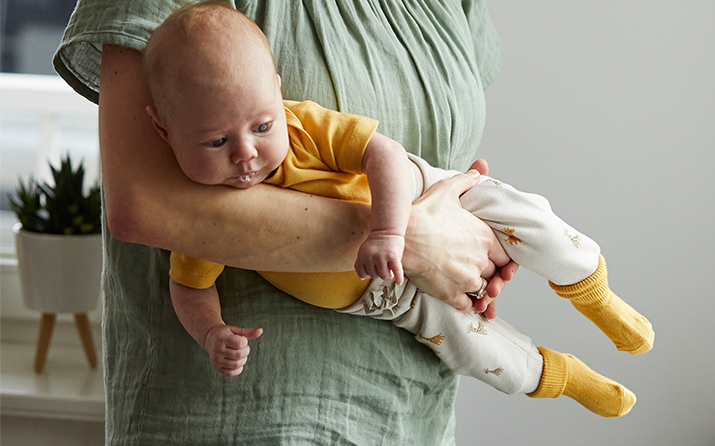
Even though tummy ache is simply part and parcel of the first months of life, parents naturally have an urgent desire to relieve their little ones of the pain. Or at the very least to provide relief.
Baby massages have proven to be a good way to do this. They can relieve the pressure in the tummy, have an overall relaxing effect and deepen the bond between the parents and the child.

THE CYCLIST

Take hold of your baby’s ankles with both hands and make calm, round, large cycling movements. These make it easier for the air to escape from the abdomen.
THE FLYER

Your baby lies with their tummy on your forearm. One hand is under the arm, the other grips the leg. That way it’s safe. And the position makes it easier for the pent-up air in the intestine to escape.
THE ROWER

Your baby grips your thumbs. You hold their wrists and make large, round, gentle circular movements, from the hips all the way around to the hips again.
THE WIPER

Use your thumbs to sweep from the bottom of the nose across the forehead to the little ears. This constant repetition is so pleasant and relaxing that it sometimes makes babies fall asleep.
THE PALM PRESSER

Massage your baby's palm with your thumb. Apply gentle pressure for about 60 seconds. Finally stroke in the direction of the fingers. Then it's the other hand's turn.
THE HOLDER

Lying on your back with your knees bent, lean your baby against your thighs. Eye contact is important. Then place the heels of your hands gently below the collarbone and stay like that for two minutes.
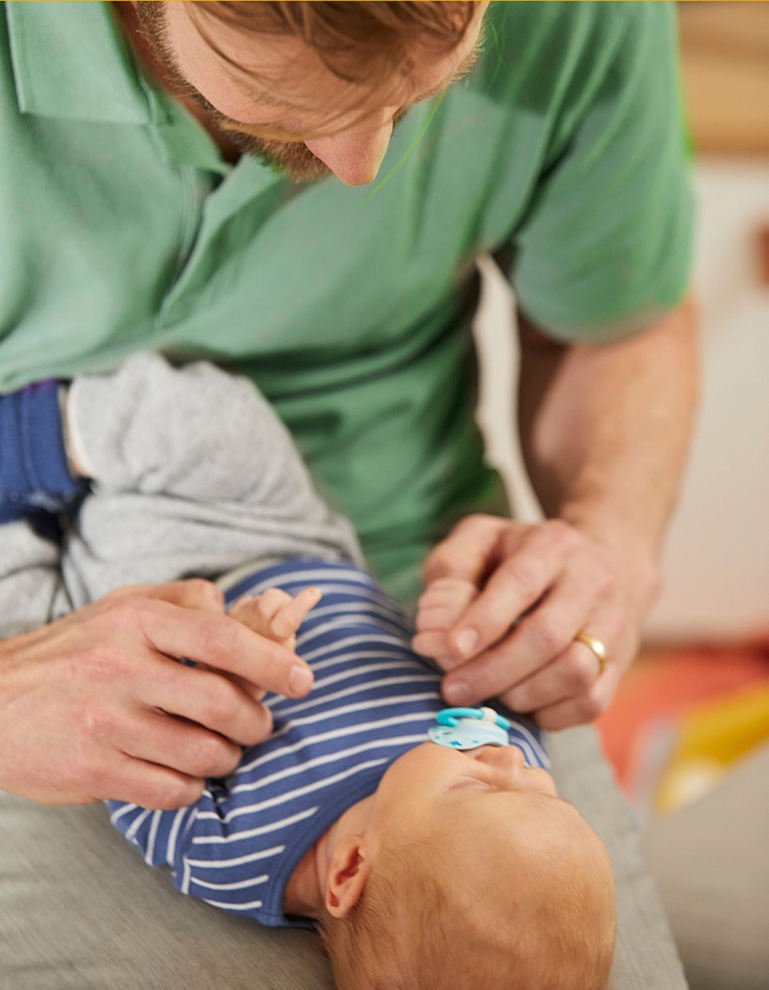
CAN YOU AVOID A
TUMMY ACHE?
Yes and no! Tummy ache affects about 80% of all babies in the first few months of life and can only be prevented to a certain extent. But there is at least one simple way to avoid tummy ache: by swallowing as little air as possible when feeding and drinking.

WHAT DOES
YOUR BABY'S NAPPY
TELL YOU?

Adults without children are often amazed at how passionate, persistent and interested young parents can be about the contents of their baby´s nappy. They sniff, compare and describe it in detail. As disconcerting as it may be for some people, the contents of the nappy are actually meaningful and change amazingly quickly in the course of a baby's life. We, at NUK, also take a close look (and sniff) because the nappy oracle tells us a lot of interesting things about your baby's life, nutrition and health.
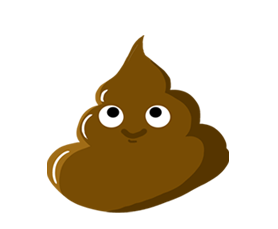
COLOURFUL AND SOLID
If your child mainly eats solids, the stool can take on all kinds of colours. This depends on what was on the menu. The consistency is then more solid. And the smell is no longer so "baby-sweet".
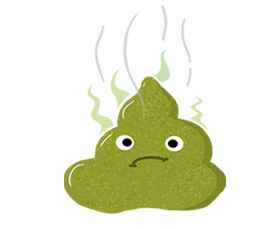
GREEN, FOAMY, PUNGENT SMELL
If the stool fits this description and is still like this the next day, it may indicate an infection. Time to visit the paediatrician. The same applies with diarrhoea. A doctor should also be consulted in the case of constipation or if your baby is in pain during bowel movements.
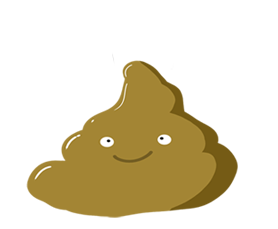
YELLOWISH, SOLID AND STINKY
By the way, babies who are given formula from the beginning do not have projectile poop. Here, too, yellowish but firmer stools lands in the nappy. But you can recognise the formula stool, even blindfolded, by its intense smell.

YELLOW AND SOFT
When your baby gets what is called mature breast milk, the poop changes too. All shades of yellow and consistencies from soft to liquid are now normal in the nappy.

LIGHT GREEN AND LIQUID
"Projectile poop" - that's what midwives call the light green, liquid droplets that can sometimes shoot metres across the room. No joke. After the first breast milk - colostrum - there is another type of milk that is produced for about two weeks. It's what makes your baby's stool so light and "bubbly".

BLACK AND TOUGH
It's black, it's tough and somehow has nothing in common with a poo. But: it's completely normal. This excretion, called "meconium"(mec for short), is your baby’s first bowel movement. If it appears within 48 hours of birth, then the intestines are working optimally. But even if you have to wait a little longer for this viscous mass, there is no reason to worry.
